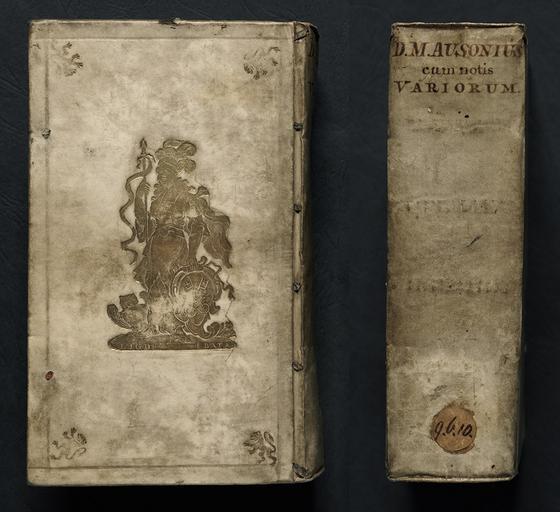MAKE A MEME
View Large Image

| View Original: | Dutch_prize_binding,_17th_century.jpg (1024x937) | |||
| Download: | Original | Medium | Small | Thumb |
| Courtesy of: | www.flickr.com | More Like This | ||
| Keywords: bookbinding historic antique book binding photo border text writing ancient The tradition of presenting books to pupils at schools as a reward for academic achievement has a long history. Many were specially bound and included the coat of arms of the school or city. This prize binding of vellum over stiff boards, a prize binding for the Latin School in Leiden, shows Pallas Athene holding a shield containing the arms of that city. It is bound in typical style and includes endbands on the spine in cream and faded pink thread, silk ties alternately pink and white at the fore-edge, and red-sprinkled edges. Thus the red and white colours of the Leiden coat of arms are represented on the whole binding. A Latin school existed in Leiden from at least the second half of the 13th century, becoming the town school from 1356. From 1586 books were awarded to the best pupils at the half-yearly examinations; folio formats (the largest size) for the top two classes, and quartos and octavos (smaller volumes) for the rest. In the 18th century, when Latin ceased to be the main language for teaching and learning, the school broadened its curriculum and changed its name to Gymnasium. Lower cover and spine of Decimus Magnus Ausonius, ‘D. Magni Avsonii Bvrdigalensis Opera’ (Amstelodami: Apud Ioannem Blaev, [1671]). RDut AUSO Magn 1671. The tradition of presenting books to pupils at schools as a reward for academic achievement has a long history. Many were specially bound and included the coat of arms of the school or city. This prize binding of vellum over stiff boards, a prize binding for the Latin School in Leiden, shows Pallas Athene holding a shield containing the arms of that city. It is bound in typical style and includes endbands on the spine in cream and faded pink thread, silk ties alternately pink and white at the fore-edge, and red-sprinkled edges. Thus the red and white colours of the Leiden coat of arms are represented on the whole binding. A Latin school existed in Leiden from at least the second half of the 13th century, becoming the town school from 1356. From 1586 books were awarded to the best pupils at the half-yearly examinations; folio formats (the largest size) for the top two classes, and quartos and octavos (smaller volumes) for the rest. In the 18th century, when Latin ceased to be the main language for teaching and learning, the school broadened its curriculum and changed its name to Gymnasium. Lower cover and spine of Decimus Magnus Ausonius, ‘D. Magni Avsonii Bvrdigalensis Opera’ (Amstelodami: Apud Ioannem Blaev, [1671]). RDut AUSO Magn 1671. | ||||